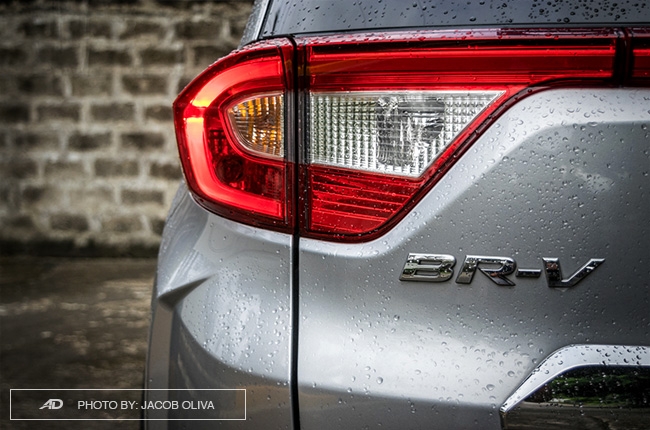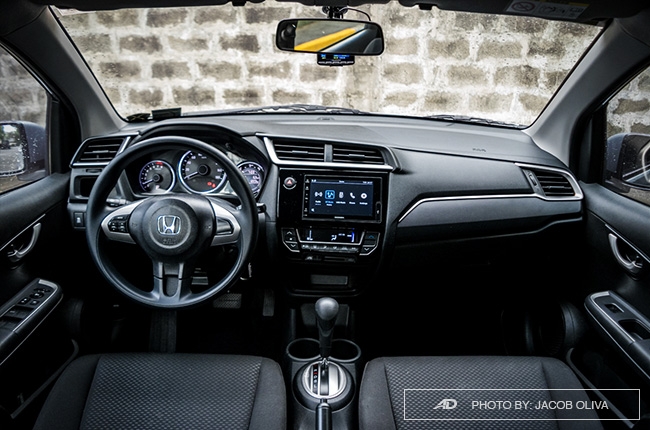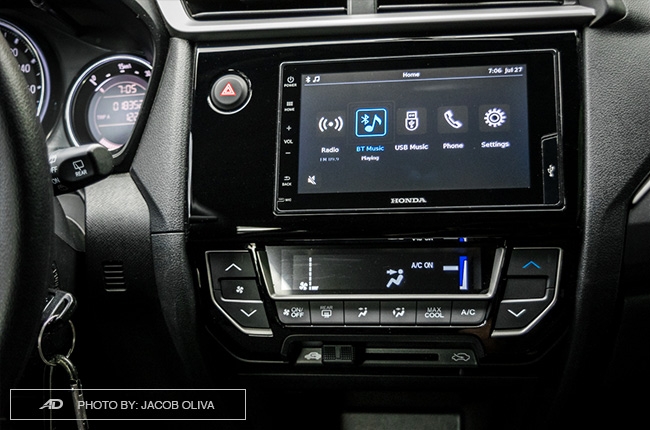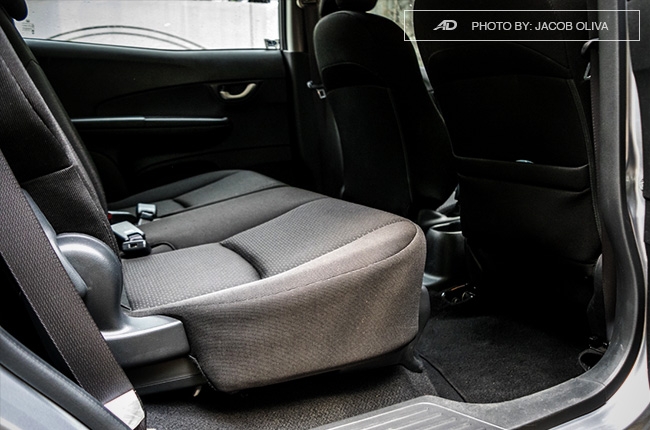
When Honda Cars Philippines, Inc. (HCPI) introduced the Honda BR-V in 2016, it was a game-changer. A seven-seater that isn’t an MPV, and has a price tag just right above P1-million – that’s the perfect recipe for a family car for most Filipinos. HCPI banked on that marketability of the BR-V, ultimately catapulting the model as one of its top sellers. Plus, it literally didn’t have a rival in its class.
Not anymore. This year, Mitsubishi and Toyota almost simultaneously introduced the Mitsubishi Xpander and Toyota Rush in the Philippines, and the interest in both cars are evident. With that, the BR-V suddenly got rivals, and worse, the launches are from the country’s top brands. Can you imagine what that felt like? It’s like when you’re alone in a coffee shop, enjoying caffeine and the companionship of a book, but then a group of noisy teenagers enters the cafe to disturb your peace. Such a bummer, right?
Engine Output (HP), Acceleration, Transmission, Handling 3.5/5
Exterior & Interior Design, Quality, Fit and Finish, Ergonomics 4.0/5
Cabin Comfort, Suspension, NVH Insulation 3.5/5
Convenience Technologies, Active and Passive Safety Features 3.5/5
Amount of the vehicle you get for the price, Fuel Efficiency 3.5/5
- Exterior design is still better than newer rivals.
- Fuel-efficient when with minimal load.
- Spacious and flexible interior.
- Stiff suspension.
- NVH isolation needs improvement.
- Needs more power when fully-loaded.
Regardless of that, the BR-V continues to stay attractive for those looking for a family vehicle, and our time with the BR-V S CVT is a great proof for that.
If it isn’t obvious, the BR-V’s selling point is its bold looks. Sure, it shares a lot of things with the Honda Mobilio MPV, but it has a more upright bonnet, more defined bumpers, and some underneath claddings, while the Modulo accessories of this media unit bring the excitement further to greater heights.
As this S CVT trim is the base model, you will have to sacrifice a few of things found in the top of the range BR-V 1.5 V CVT that we reviewed before, such as chrome door handles, side sill protector, and bumper skid garnishments. Interestingly enough, the Modulo upgrades cover these, thus, almost making the S CVT look almost the same as the V CVT. Except for the door handles, but that’s fine for me, personally, because chrome isn’t my thing.
Its 201-mm ground clearance and 16-inch alloys give it a pass as a crossover, but that’s not reason enough for you to use this car for some off-road adventure. Yet for Metro Manila and provincial roads, potholes and rough roads included, you’re going to be fine with the BR-V.
I like the way the front cabin of the BR-V looks. Its straightforward, has a lot of cupholders, and the plastics don’t look cheap. The design is well-executed, and the colors are coherent. Even with the gray headliners of the S CVT variant (as opposed to the black of the V CVT), the cabin doesn't feel as if you were skimped out on materials. Except maybe for the piano black accents, which manufacturers should stop using as it deteriorates quickly.
As the base variant, the S CVT gets fabric upholstery instead of leather, while the steering wheel and gear shifter knob are covered in urethane material. That’s fine as it still feels nice to the touch. What doesn’t feel good, however, is the material on the door panel that your left elbow touches. It’s sometimes annoying, especially when you’re trying to rest your elbows during a long drive.
Another thing that can be improved on is the BR-V’s seat adjustment. You’re limited to just slide and recline, while the steering wheel can only be tilted. Because of that, finding the perfect driving position takes time (that’s coming from a guy who stands 5’6”). What more for those with shorter height?
As for the head unit, the BR-V S CVT is still equipped with the seven-inch touchscreen sans the Navi and HDMI connectivity. So if you’re just a normal person who listens to Spotify while driving, you’re good. The four speakers sounded nice, too – something that I loved in the V CVT variant.
There’s not much toys in the second row, except for the bottle holders by the doors and ceiling-mounted air conditioning with controls. The third row, on the contrary, has cupholders and a space for your gadget, which is rather odd but a welcome feat. What’s best with the BR-V is that the second row can be slid forward to give more space to the person at the back. With that, there’s enough space for most people standing 5’6” and below, but beyond that, it can get cramped.
Trunk space is a bit limited with all seats erect, but that’s understandable with this segment. The third row can be stumbled and folded to give more space, which, as we tested, could fit at least eight small luggage.

As eager to accommodate five people and boat-loads of baggage, the BR-V’s engine lacks a bit of power for the task. It still can move the laden vehicle to up to 60 to 80 km/h, but beyond that, the engine whines as you push the vehicle to legal speed limit.
That’s quite expected with the BR-V. With a 1.5L gasoline engine that’s shared with the Jazz, City, and Mobilio, the 118 hp and 145 Nm torque in a larger and heavier vehicle can be lacking when fully-loaded. It’s not that bad, but it’s not as punchy when only three people are on board. Inclines aren’t an issue, though, as the BR-V’s equipped with Hill Start Assist.

With minimal load, the BR-V is alert and decisive. It’s quick to respond to driving inputs, which makes it a joy to drive at low- and mid-speeds. You can thank the the Earth Dreams CVT for that, as Honda was able to develop a well-rounded CVT that’s a pleasure to drive. However, as an S CVT variant, it doesn’t have paddle shifters, so there’s that.
As great as a punchy engine sounds, it can be detrimental to the car’s overall comfort, though. You and your passengers may often find yourselves abruptly touching the head rests, especially when moving from stand still. The stiff suspension setup also feels jittery in road imperfections, and can really be felt inside the cabin. NVH isolation needs improvement, but it isn’t hard to live with.

The steering wheel feels heavy, but not too much, which accounts to precise steering, while understeer is very minimal. Tight city maneuvers isn’t an issue as well, as the steering lightens at low speeds. The front discs and rear drums setup are good enough, but can still be improved.
Just like the V CVT Modulo, that BR-V S CVT recorded an above average consumption with two people on board. Highway runs clocked in 21.5 km/L (average speed: 90 km/h), while in-city heavy traffic at 15 km/h average registered 7.2 km/L. Faster paces as 60 km/h read 15.1 km/L. However, when filled with passengers and/or luggage, the BR-V’s consumption is twice as much.

New players entering a segment isn’t always a bad thing; it makes the competition healthy, and proves how good the mainstay is. Such is the case with the Honda BR-V. And with the P1,030,000 price tag for the S CVT, plus P42,000 for the Modulo kits, it is an attractive car choice.
Yes, it has its shortcomings in terms of power and some other things, but when it comes to essentials for a family vehicle, it definitely deserves two thumbs up.
Specifications
Engine
1.5 LFuel Type
GasolinePerformance
118 hp @ 6,600 rpmTransmission
CVT-
Summary
-
Name Honda BR-V 1.5 S CVT Body Type Crossover Price ₱1,058,000 Transmission Category CVT -
Engine
-
Engine Size 1.5 L Displacement 1,497 cc Number of Cylinders 4 Number of Valves 16 Transmission Type Continuously Variable Transmission (CVT) -
Performance
-
Drivetrain Front-Wheel Drive Max Output (hp) 118 hp @ 6,600 rpm Max Torque (nm) 145 Nm @ 4,600 rpm -
Economy & Environment
-
Fuel Type Gasoline Emissions Standard n/a Fuel Capacity 42.0 L Combined Fuel Consumption n/a -
Dimensions
-
Length 4,456 mm Width 1,735 mm Height 1,677 mm Wheelbase 2,662 mm Turning Circle 11 m Ground Clearance 201 mm Trunk Capacity 223 L Number of Doors 5 Number of Seats 7 -
Safety & Security
-
Driver's Airbag 1 Front Passenger's Airbag 1 Side Airbag Curtain Airbag Knee Airbag Auto Brake System Electronic Brake Distribution Anti-lock Brake System (ABS) with Electronic Brake Force Distribution
Immobilizer Security Alarm Stability Control Electronic Door Locks Speed Sensing Door Locks ISOFIX Lane Departure Warning System Blind-Spot Detection System -
Features
-
Cruise Control Front Parking Sensors Rear Parking Sensors Leather Upholstery Push Start Button Wheel Size 16 in Wheels Metal Type Alloy Airconditioning System Manual Air-Conditioning with Rear Independent Controls Entertainment System 7-inch Capacitive Touchscreen Display Audio with Bluetooth and USB via 4 speakers Connectivity Bluetooth, USB Navigation Ready Warranty 3 Years (100,000 km) Keyless Entry Roof Rack Sunroof Electric Adjustable Seats Power Steering Power Windows Power Outlet Steering Wheel Audio Control -
Technology
-
Active Park Assist Hill Start Assist AWD Modes n/a Tire Pressure Monitoring Heads-up Display Power Liftgate Start-stop System
Colors
Latest Review
-
2026 BYD eMAX 7 Review / Review
Can the BYD eMAX 7 prove that electric MPVs work in the Philippines? With 201 hp and 530 km of range, it just might.
4.3 / 5 -
2026 Hyundai Creta N-Line Review / Review
The Creta N-Line isn’t just a Creta with sporty looks; it’s got the performance and bite to back up its style.
4.3 / 5 -
2026 BYD Shark 6 DMO Review / Review
Can a hybrid pickup truck break the mold of what pickup trucks can be? The Shark 6 DMO has something to say about that.
4.6 / 5
Popular Articles
-
Electric Vehicles in the Philippines for under P1 million
Jerome Tresvalles · Aug 19, 2025
-
Top 3 Cars For Every Lifestyle—What Cars Are Right For You? | Behind a Desk
Caco Tirona · Apr 24, 2024
-
5 Tips to Maximize Fuel Efficiency
Jerome Tresvalles · Sep 09, 2024
-
Five driving habits that are draining your fuel tank
Jerome Tresvalles · Jun 24, 2025
-
Can engine braking harm your engine?
Jerome Tresvalles · Sep 11, 2025
-
Do electric cars even need maintenance?
Jerome Tresvalles · Oct 23, 2024
-
Best vehicles for an active outdoor lifestyle
Shaynah Miranda · Jul 25, 2024
-
How to drive different types of vehicle transmissions
May 23, 2024
-
5 easy ways to keep your car interior clean
Allysa Mae Zulueta · Nov 15, 2021
-
How to survive Metro Manila traffic
Earl Lee · Aug 16, 2022























